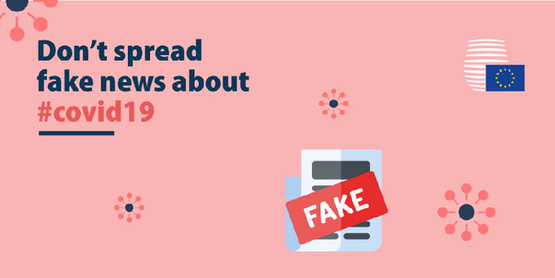It’s been more than a year since the World Health Organization (WHO) declared a pandemic yet we’re still fighting a different kind of battle- misinformation or fake news about the COVID-19. Many people still believe that this is some elaborate “plandemic” of governments around the world in collusion with giant pharmaceutical companies. Some of this fake news also seems to be politically motivated.
Acting on the wrong information is dangerous. According to WHO, in the first three months of 2020, almost 6,000 people around the world were hospitalized because of coronavirus misinformation. Also, during this period, researchers estimated that at least 800 people may have died due to misinformation related to COVID-19.
In today’s digital age, information whether right or wrong, good or bad spreads fast creating a breeding ground for uncertainty. It is a perfect place for fear, anxiety, stigma, finger-pointing, aggression, and distrust to breed.
An Infodemic
With the emergence of a pandemic, another epidemic of equal proportion is also birthed, an infodemic. An Infodemic is too much information that includes false or misleading information in the digital and physical environments during a disease outbreak. It leads to mistrust in health authorities and undermines public health response. This could lead to intensifying or lengthening outbreaks when people are unsure about what they could do to protect their health and the health of the people around them.
This infodemic brought along a lot of confusion regarding the information we receive about contracting and treating COVID-19. With an influx of information, a lot of people don’t know where and how to get real facts about the coronavirus, how it is spread and how we can protect ourselves.
Here are 5 of the most common myths about COVID-19 and the facts that debunk them.
Myth 1:
5G mobile network help spread COVID-19
FACT:
Viruses cannot travel on radio waves or mobile networks.
COVID-19 is spreading even in countries where there are no 5G mobile networks. COVID-19 is spread through respiratory droplets when someone with the virus coughs, sneezes or speaks. The virus can also spread when touching surfaces that are contaminated and then touches their eyes, nose, and mouth.
Myth #2
Ultraviolet (UV lamps) are effective in killing the coronavirus and safe to use in disinfecting the hands and other areas of the skin.
FACT:
Ultraviolet (UV) lamps should not be used to disinfect hands or other areas of your skin.
Ultraviolet (UV) radiation is harmful and can cause irritation to the skin and could damage your eyes. A more effective way to kill the virus and clean your hands is by washing with soap and water or using an alcohol-based hand rub.
Myth #3
COVID-19 cannot be transmitted in hot and humid places. Exposing yourself to the sun or temperatures higher than 25 degrees protects them from COVID-19.
FACT:
COVID-19 can be transmitted in areas with hot and humid places.
So, soaking under the heat of the sun does not protect you from viruses. The best way you can protect yourself from coronavirus is to regularly wash your hands, follow health protocols, and maintain a physical distance of at least 1 meter away from others.
Myth #4
Coronavirus can be spread through mosquito bites.
FACT:
The coronavirus cannot be transmitted through mosquito bites.
There has been no study or information suggesting that mosquitoes help the spread of the new coronavirus. The COVID-19 virus is a respiratory virus that is primarily spread through droplets when an infected person coughs or sneezes, or through droplets of saliva or nasal discharge. To protect yourself aside from following health protocols, avoid close contact with anyone who is coughing or sneezing.
Myth # 5
Using a mask for a long time can cause CO2 intoxication or oxygen deficiency.
FACT:
Using a medical mask for a long time, when worn properly, does not cause CO2 intoxication nor oxygen deficiency.
The use of medical masks for longer times can be uncomfortable but not so much to be life-threatening. When wearing a medical mask, make sure that it fits properly, just tight enough for you to be able to breathe normally. Never reuse a disposable mask and change it as soon as it gets wet.
There is a lot of fake news that you see online and all of these come from unreliable sources. A year into the pandemic, vaccines are available for everyone, but misleading information has not stopped, instead, it has increased which now includes myths about the vaccine’s components. The people who are purportedly twisting facts about the coronavirus are making it more difficult to achieve what we want – to go back into a world free of the virus.
In the Philippines, a survey done by Octa Research in February 2021 says that only 19% of adult Filipinos are willing to get vaccinated, and 46% are still unwilling even if it was safe and free of charge. Months later, more people are getting themselves vaccinated through the combined efforts of the Department of Health (DOH) and the local government units and medical practitioner’s campaigns in spreading facts and information about the virus and the vaccine.
What to do or how to deal with people spreading misinformation about COVID-19 and the vaccines.
Knowing the right information is very important in making informed decisions. The Department of Health (DOH) highly encourages us to:
- make fact-checking a habit.
- always verify with legitimate sources like the Department of Health’s (DOH) Facebook page or website.
If you encounter fake news or misinformation, please report it through the DOH’s KIRA Chatbot accessible via Viber or Messenger.
The Chinese General Hospital Medical Center’s website is also a great source for factual and helpful information about COVID-19 and the vaccines. We are always here to provide guidance and support to our patients. Get vaccinated now and together we can help keep the numbers down and protect ourselves and our loved ones from getting sick.



